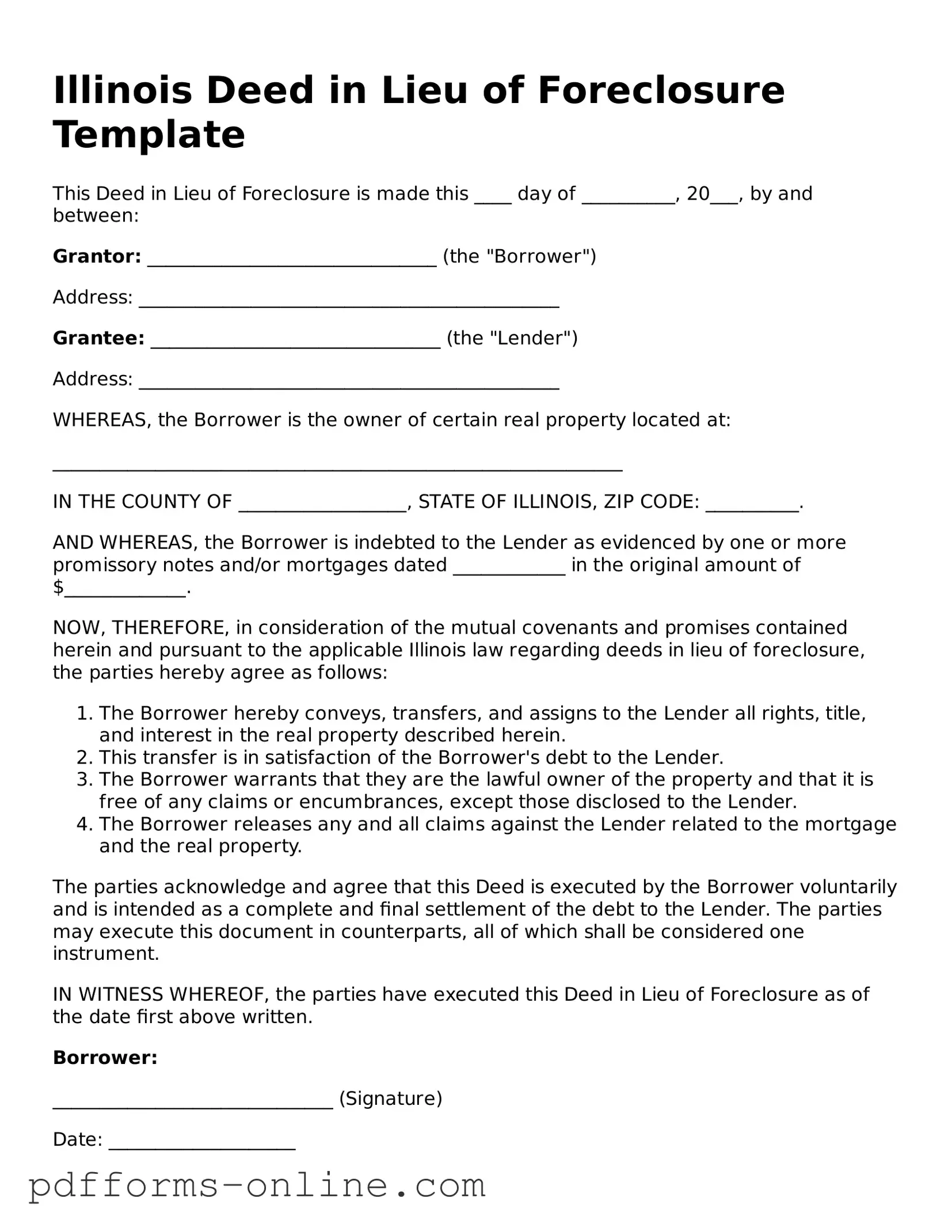Illinois Deed in Lieu of Foreclosure Template
This Deed in Lieu of Foreclosure is made this ____ day of __________, 20___, by and between:
Grantor: _______________________________ (the "Borrower")
Address: _____________________________________________
Grantee: _______________________________ (the "Lender")
Address: _____________________________________________
WHEREAS, the Borrower is the owner of certain real property located at:
_____________________________________________________________
IN THE COUNTY OF __________________, STATE OF ILLINOIS, ZIP CODE: __________.
AND WHEREAS, the Borrower is indebted to the Lender as evidenced by one or more promissory notes and/or mortgages dated ____________ in the original amount of $_____________.
NOW, THEREFORE, in consideration of the mutual covenants and promises contained herein and pursuant to the applicable Illinois law regarding deeds in lieu of foreclosure, the parties hereby agree as follows:
- The Borrower hereby conveys, transfers, and assigns to the Lender all rights, title, and interest in the real property described herein.
- This transfer is in satisfaction of the Borrower's debt to the Lender.
- The Borrower warrants that they are the lawful owner of the property and that it is free of any claims or encumbrances, except those disclosed to the Lender.
- The Borrower releases any and all claims against the Lender related to the mortgage and the real property.
The parties acknowledge and agree that this Deed is executed by the Borrower voluntarily and is intended as a complete and final settlement of the debt to the Lender. The parties may execute this document in counterparts, all of which shall be considered one instrument.
IN WITNESS WHEREOF, the parties have executed this Deed in Lieu of Foreclosure as of the date first above written.
Borrower:
______________________________ (Signature)
Date: ____________________
Lender:
______________________________ (Signature)
Date: ____________________
